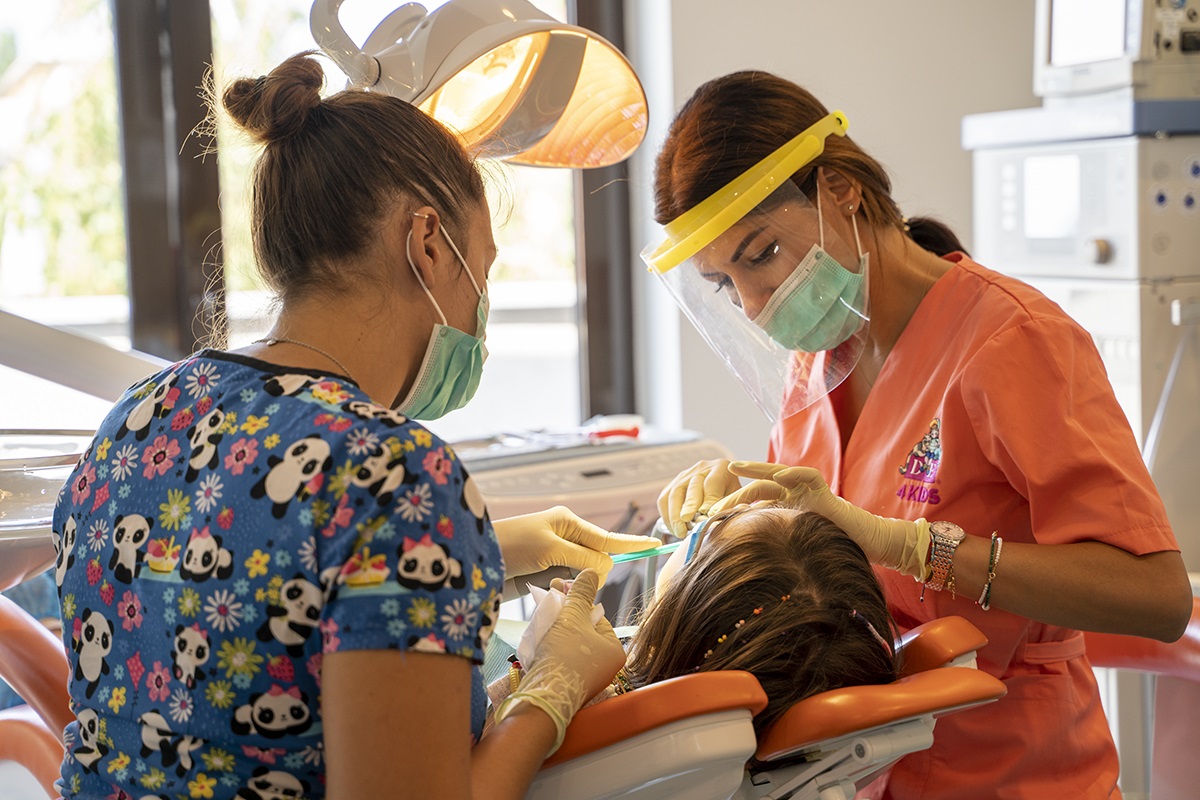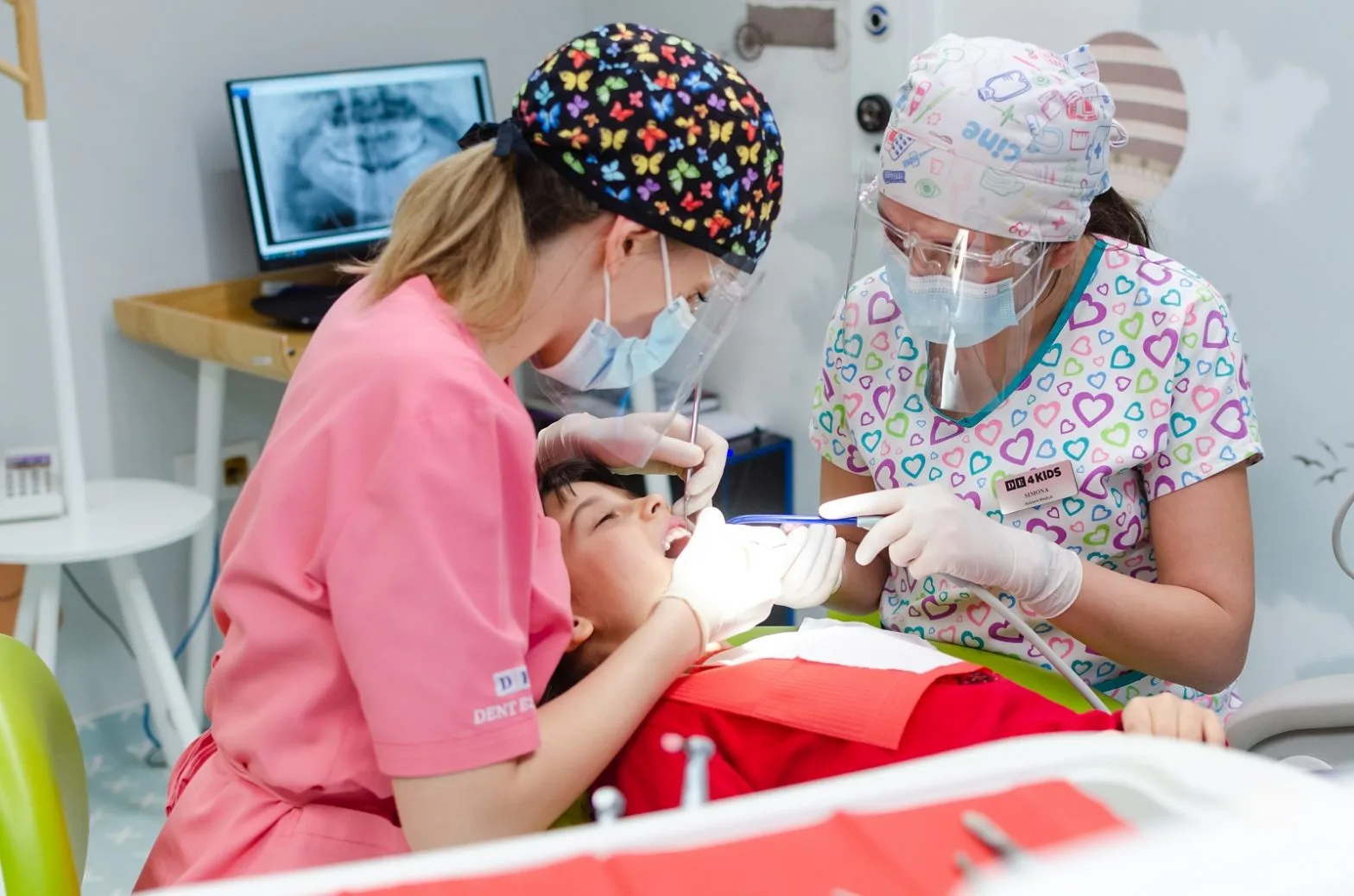
Dental trauma in children: What first aid measures are necessary and how can the tooth be saved?

According to the International Association of Dental Traumatology (IADT), 25% of children have suffered trauma to their permanent teeth, with most injuries occurring before the age of 19.
Dental trauma frequently affects children and adolescents.
According to the International Association of Dental Traumatology (IADT), 25% of children have suffered trauma to their permanent teeth, with most injuries occurring before the age of 19.
Children may experience dental injuries from accidents during sports or recreational activities (playgrounds, swimming pools). That’s why it’s extremely important to know what first aid steps to take and the consequences of not receiving timely dental care.
A proper diagnosis from a pediatric dentist, followed by a treatment plan and regular monitoring, is essential for a favorable outcome in the case of dental trauma.
Types of dental trauma in children
Dental trauma in children requires urgent treatment without delay, as complications with long-term consequences may occur.
In children, trauma can affect both primary (baby) teeth and permanent teeth. According to the IADT, dental injuries fall into three main categories:
- Fractures: enamel infractions (minor cracks), enamel fractures, uncomplicated crown fractures, complicated crown fractures, root fractures, alveolar fractures.
- Luxations: concussion, subluxation, extrusion, lateral luxation, intrusion, avulsion (tooth knocked out).
- Injuries to gums and oral mucosa: lacerations (tears), contusions (bruises), abrasions.
Fractures can range from simple enamel cracks to more serious ones. In the case of crown fractures, they can be uncomplicated (the tooth fragment may still be attached or completely detached, without affecting the dental pulp) or complicated (when the dental pulp is exposed). Crown-root fractures are usually the result of more severe trauma, affecting both the crown and part of the tooth root.
When it comes to dental luxations, this may involve increased tooth mobility, displacement of the tooth, or situations where the tooth is completely dislodged from its socket.
Providing first aid at home for dental trauma
Whether it’s a primary or permanent tooth, knowing how to act quickly at home before seeing a dentist can make a big difference. However, rapid intervention by a pediatric dentist is key for complete and successful recovery.
First aid steps for minor injuries:
- Help the child rinse their mouth to stop bleeding and apply a cold compress to reduce swelling.
- Do not try to reposition the tooth yourself!
- If you find a broken tooth fragment, place it in milk or saline solution and take it with you to the dentist.
- Contact the pediatric dentist immediately. Prompt action helps prevent infection and reduce the child’s discomfort.
First aid steps for severe injuries (avulsion – tooth knocked out):
- Find the tooth and hold it by the crown, not the root.
- Rinse it with cold water for about 10 seconds (no soap, do not scrub).
- If possible, reinsert the tooth into its socket. Have the child bite down on a sterile gauze pad to keep it in place.
- If reinsertion is not possible, place the tooth in cold milk or saline – never in plain water.
- Go to the pediatric dentist immediately.
Importance of a dental consultation following trauma
Examining young children after a dental injury can be challenging due to their anxiety or lack of cooperation.
Factors like the child’s age and the time elapsed since the injury play a key role in the treatment’s success.
It’s important to remember the close relationship between the root tip of a baby tooth and the developing permanent tooth bud. An injury to the baby tooth or the surrounding bone can lead to serious long-term consequences for the permanent tooth (eruption problems, misalignment).
Treatment recommended by a pediatric dentist may include: replantation of avulsed teeth, stabilization of luxated (displaced) teeth and reattachment of fractured tooth fragments.
Pediatric dentists also strive to preserve the pulp of the baby tooth to avoid harming the development of the underlying permanent tooth. Young permanent teeth have a remarkable ability to heal, even in cases involving pulp exposure, luxation, or root fractures.
Dental X-rays for trauma in children
In the case of dental trauma in children, digital dental X-rays are one of the recommended tools for establishing a diagnosis, as well as for follow-up examinations.
With the help of digital X-rays, the pediatric dentist can identify dental fractures, jawbone fractures, root injuries, or soft tissue damage.
Additionally, digital dental X-rays allow the dentist to monitor the healing of soft tissues, assess tooth discoloration, or track the eruption of a misaligned tooth.
In conclusion, it is important to remember that following the treatment plan recommended by the dentist, attending regular check-ups, and maintaining proper home care are all essential factors that contribute to full recovery after dental trauma.
Both patients and parents should be informed about:
- The necessary care for the injured tooth/teeth and surrounding tissues to support optimal healing
- Measures to prevent further injuries, such as avoiding participation in sports activities
- Proper oral hygiene rules (brushing with a soft toothbrush and using an antibacterial mouthwash).
Completează formularul și unul dintre asistenții noștri te va contacta pentru a programa vizita la clinică.











 The role of nutrition in preventing cavities in baby teeth
The role of nutrition in preventing cavities in baby teeth 